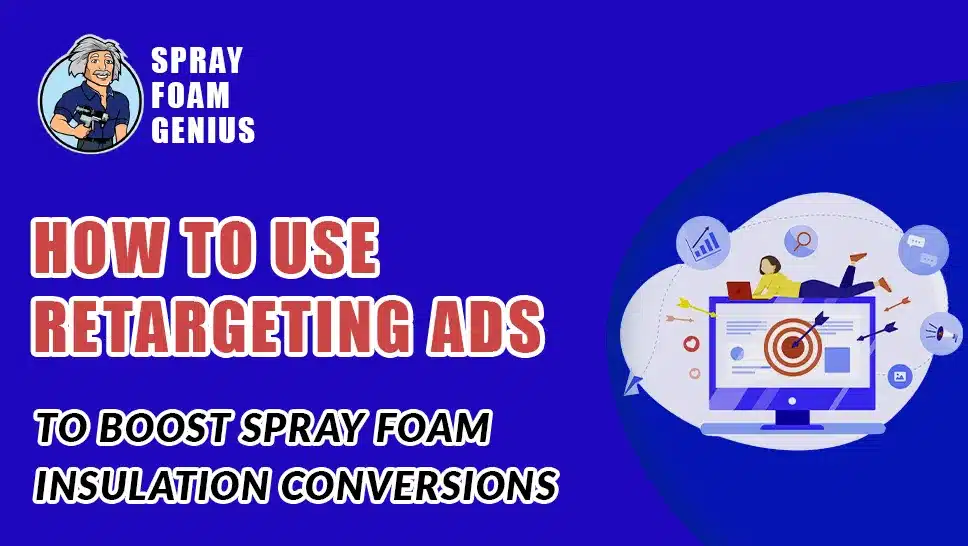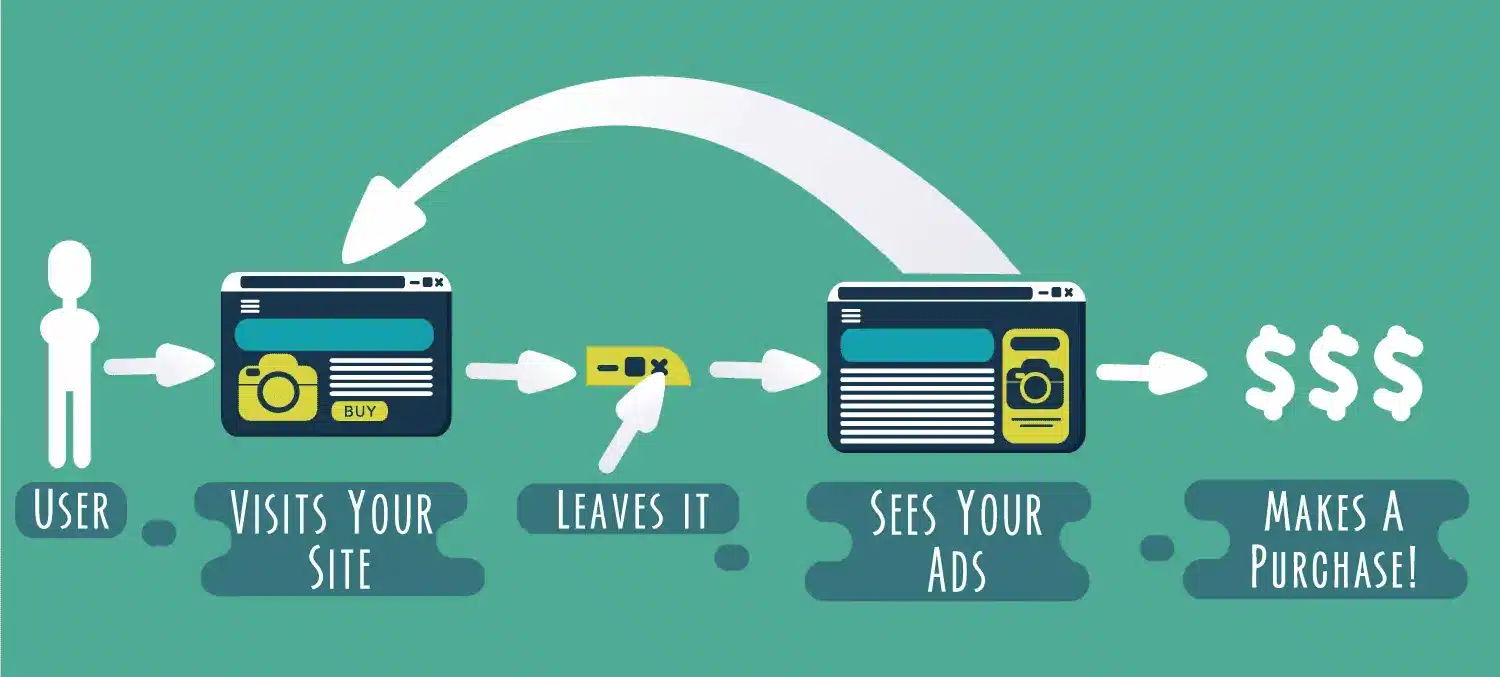
In the competitive world of spray foam insulation, standing out and converting leads into loyal customers is crucial. One of the most effective strategies to enhance your conversion rates is through retargeting ads. At Spray Foam Genius Marketing, we specialize in helping spray foam insulation contractors like you leverage advanced PPC techniques, including retargeting, to drive more business. This guide will walk you through how to use retargeting ads to boost your conversions and ensure your advertising dollars are well spent.
What Are Retargeting Ads?
Retargeting ads are a form of online advertising that focuses on users who have previously interacted with your website or content but did not convert. These ads help re-engage potential customers by displaying your brand to them as they browse other sites online. Essentially, retargeting keeps your business top-of-mind, encouraging users to return and complete their purchase or inquiry.
Why Retargeting Ads Are Essential for Spray Foam Insulation Contractors
Increased Conversion Rates
Retargeting ads are highly effective because they target users who have already shown interest in your services. According to studies, retargeted users are 70% more likely to convert than non-retargeted users. For spray foam insulation contractors, this means that your ads will reach individuals who are already considering insulation solutions, giving you a significant advantage over your competitors.
Cost-Effective Advertising
Compared to traditional display ads, retargeting ads generally have a lower cost per click (CPC) and cost per acquisition (CPA). This is because you are targeting a more specific audience—those who have already interacted with your site. This precision helps maximize your advertising budget and improve your return on investment (ROI).
Improved Brand Recall
Retargeting ads help improve brand recall by repeatedly exposing users to your business. When users see your brand multiple times, they are more likely to remember it when they are ready to make a decision. This increased familiarity can significantly impact your conversion rates.
Setting Up Retargeting Ads for Your Spray Foam Insulation Business
Step 1: Define Your Audience Segments
Before launching a retargeting campaign, it is crucial to define your audience segments. For spray foam insulation contractors, you might consider segmenting your audience based on:
- Website Visitors: Users who have visited your website but did not fill out a contact form or request a quote.
- Engaged Users: Visitors who have spent a significant amount of time on your site or viewed multiple pages.
- Previous Customers: Users who have previously purchased your services but have not engaged with your site recently.
By segmenting your audience, you can tailor your retargeting ads to address the specific needs and behaviors of each group.
Step 2: Install Retargeting Pixels
To track user interactions and serve retargeting ads, you need to install retargeting pixels on your website. A retargeting pixel is a small piece of code that tracks visitors and their behavior on your site. For example, Google Ads and Facebook Ads offer retargeting pixels that you can easily integrate into your website.
Step 3: Create Compelling Ad Creative
Your retargeting ads should be visually appealing and relevant to your audience. For spray foam insulation, consider using the following ad formats:
- Display Ads: Use high-quality images of your spray foam insulation work, along with compelling calls-to-action (CTAs) like “Get a Free Quote” or “Contact Us Today.”
- Dynamic Ads: Show users specific products or services they viewed on your site, such as different types of insulation or pricing options.
- Video Ads: Create short, engaging videos that explain the benefits of spray foam insulation and showcase your expertise.
Step 4: Set Up Your Retargeting Campaign
Once you have your audience segments and ad creative ready, it’s time to set up your retargeting campaign. Follow these steps:
- Choose Your Platform: Decide which advertising platforms you want to use for retargeting. Google Ads and Facebook Ads are popular choices, but you can also explore other options like LinkedIn Ads or programmatic advertising networks.
- Define Your Budget: Set a budget for your retargeting campaign. Start with a modest budget and adjust based on performance. Retargeting ads generally require less budget than traditional ads due to their targeted nature.
- Set Up Campaign Goals: Determine what you want to achieve with your retargeting campaign, such as increasing website conversions, generating leads, or boosting brand awareness. Your goals will guide your ad targeting and optimization strategies.
- Monitor and Optimize: Regularly monitor your campaign performance and make adjustments as needed. Track key metrics such as click-through rates (CTR), conversion rates, and cost per acquisition (CPA). Use this data to optimize your ad creative, audience segments, and bidding strategies.
Best Practices for Retargeting Ads

1. Personalize Your Ads
Personalization is key to effective retargeting. Tailor your ads based on the user’s previous interactions with your site. For example, if a user viewed your spray foam insulation services page, show them ads highlighting the benefits of your services or offering a special discount.
2. Frequency Capping
Avoid overwhelming users with too many ads. Implement frequency capping to limit the number of times a user sees your retargeting ads. This helps prevent ad fatigue and ensures that your ads remain effective and engaging.
3. Use High-Quality Imagery
Visual appeal plays a significant role in ad effectiveness. Use high-quality images that showcase your spray foam insulation work and convey professionalism. Ensure your ad design aligns with your brand’s overall aesthetic.
4. Test Different Ad Formats
Experiment with different ad formats to see what resonates best with your audience. Test variations of display ads, video ads, and dynamic ads to find the most effective format for driving conversions.
5. Monitor Competitor Strategies
Keep an eye on your competitors’ retargeting strategies. Analyze their ad creative, messaging, and targeting to gain insights into what works in your industry. Use this information to refine your own retargeting campaigns.
How Retargeting Ads Fit into Your Overall Marketing Strategy
Retargeting ads should complement your overall marketing strategy. Here’s how to integrate them effectively:
1. Align With Your SEO and Content Marketing Efforts
Ensure that your retargeting ads align with your SEO and content marketing efforts. For instance, if you have a blog post about the benefits of spray foam insulation, use retargeting ads to promote this content to users who visited your site but didn’t engage further.
2. Coordinate With Your Social Media Campaigns
Retargeting ads can be seamlessly integrated with your social media campaigns. Use social media platforms to re-engage users who have interacted with your brand on these channels. This creates a cohesive marketing strategy that reinforces your message across multiple touchpoints.
3. Combine With Email Marketing
Enhance your retargeting efforts by combining them with email marketing. For example, if a user abandons a quote request form on your website, send a follow-up email encouraging them to complete the process. Retargeting ads can then reinforce this message by displaying ads related to their previous interest.
Measuring Success: Key Metrics to Track
To evaluate the effectiveness of your retargeting ads, monitor the following key metrics:
1. Click-Through Rate (CTR)
CTR measures how often users click on your ad after seeing it. A high CTR indicates that your ads are compelling and relevant to your audience.
2. Conversion Rate
Conversion rate tracks the percentage of users who complete a desired action after clicking on your ad. This could include filling out a contact form, requesting a quote, or making a purchase.
3. Cost Per Acquisition (CPA)
CPA measures the cost of acquiring a new customer through your retargeting ads. Lower CPA indicates that your ads are cost-effective and deliver good results.
4. Return on Ad Spend (ROAS)
ROAS calculates the revenue generated from your retargeting ads relative to the amount spent on them. A higher ROAS indicates a successful and profitable campaign.
Get Started with Retargeting Ads Today!
Retargeting ads offer a powerful way to boost conversions and maximize the effectiveness of your PPC advertising efforts. By focusing on users who have already shown interest in your services, you can significantly increase your chances of converting leads into customers. At Spray Foam Genius Marketing, we are here to help you implement and optimize your retargeting campaigns for the best possible results.Call us at 877-840-FOAM for USA and 844-741-FOAM for Canada visit our website at sprayfoamgeniusmarketing.com, or email us at [email protected] to get started.
- 5 Google My Business Hacks to Double Your Leads for Spray Foam Insulation Contractors - January 14, 2025
- Why Spray Foam Contractors Cannot Ignore Reputation Management in 2025 - January 13, 2025
- Local SEO Secrets Every Spray Foam Contractor Must Know to Win in 2025 - January 13, 2025

